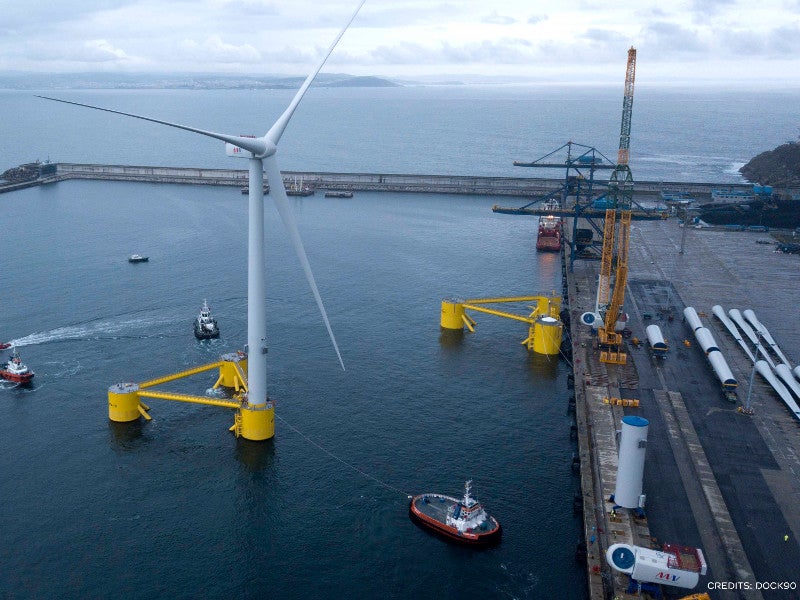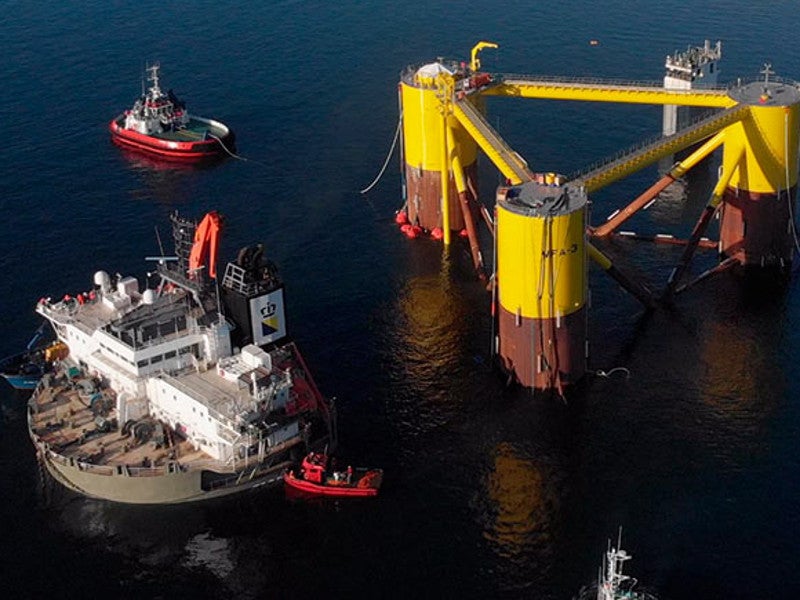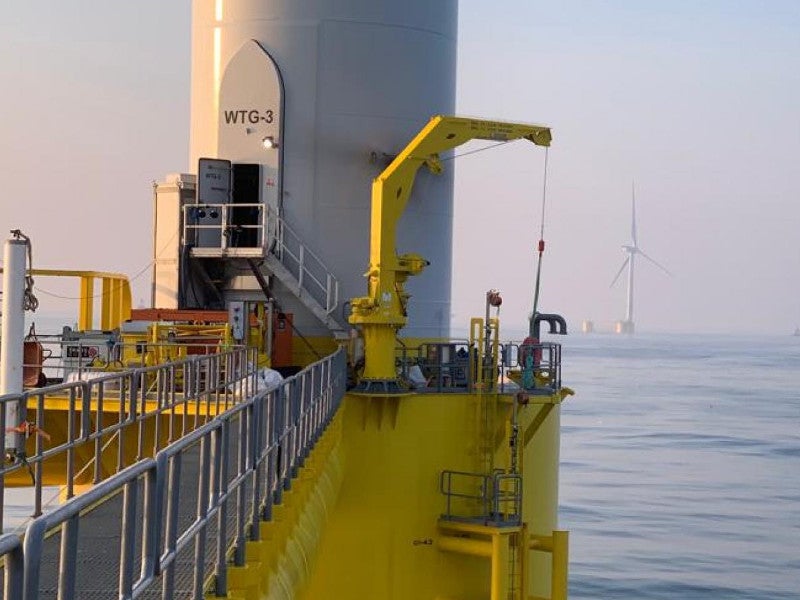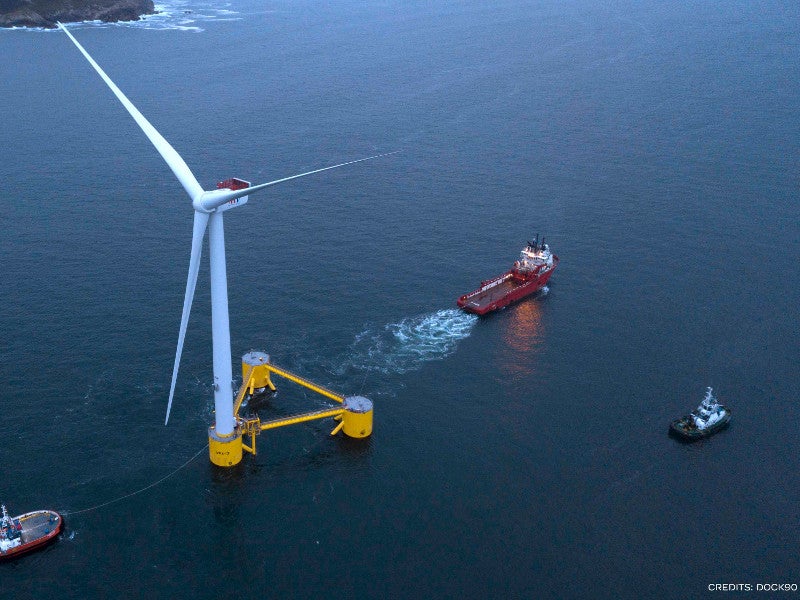WindFloat Atlantic is an offshore floating wind farm located 20km off the coast of Viana do Castelo, Portugal. Commissioned in January 2020, the project is considered to be the world’s first semi-submersible floating wind farm and the first floating wind farm in continental Europe.
The wind farm is being developed by the Windplus consortium that includes EDP Renewables (54.4%), Repsol (19.4%), Engie (25%) and Principle Power (1.2%).
WindFloat Atlantic project includes three turbines installed on floating foundations. With a total installed capacity of 25MW, the wind farm is expected to supply electricity to approximately 60,000 households a year, once fully operational.
The installation of the first turbine on the floating platform of the WindFloat project was completed in October 2019. The first platform began supplying clean energy through a 20km cable to the substation of Viana do Castelo in January 2020.
The second platform was transported to the wind farm site from the Port of Ferrol in Spain in December 2019 for installation next to the first foundation.
The floating wind farm supports a carbon-free economy in Portugal.
WindFloat Atlantic background
The successful operation of the 2MW WindFloat1 prototype wind farm paved the way for the development of the WindFloat Atlantic project. The pilot wind farm became operational off the northern coast of Portugal in 2011 and was decommissioned in 2016.
During the demonstration campaign, the prototype wind farm produced over 17GWh of energy, operating through waves up to 17m-tall and winds of more than 60k.
The technical due diligence on the WindFloat Atlantic floating wind farm project was completed in November 2018.
WindFloat Atlantic project details
The WindFloat Atlantic project has three V164-8.4MW wind turbines mounted on the semi-submersible WindFloat platforms that are anchored to the seabed at a water depth of 100m.
Each floating structure is 30m-tall and the columns are placed at 50m distance from each other.
All the three platforms are being built under the cooperation between Portugal and Spain. Two of the platforms were manufactured at the Setúbal shipyards in Portugal, while the third is being built at Spain’s Avilés and Ferrol shipyards.
The wind turbines are designed to enhance power generation and reduce costs over the lifecycle of the project. The rotor diameter of each turbine is 164m and the tip height, including base, tower and rotor, is 190m. The turbines will be connected by an 18km-long submarine cable.
WindFloat Atlantic technology
The wind farm is equipped with WindFloat floating wind turbine technology developed by Principle Power. The technology allows the installation of wind platforms in deep waters and provides access to wind resources at a water depth of over 40m.
The technology can reduce environmental impact and improve cost-effectiveness. It supports easy mounting on a dry dock without the need for specialised trailers.
In addition, the WindFloat technology can be used to perform assembly by standard onshore cranes and supports tugboat use for transportation, which reduces transport and logistics costs.
Funding
In October 2018, the European Investment Bank (EIB) granted a €60m ($68.92m) loan to the Windplus consortium for the project development.
The project also received €29.9m ($34.3m) from the European Commission under its NER300 innovative low-carbon energy funding programme. The Government of Portugal provided €6m ($6.8m) in funding through the Portuguese Carbon Fund.
WindFloat Atlantic project contractors
In September 2018, WindPlus signed a contract with MHI Vestas for the supply of three V164-8.4MW turbines for the wind farm project.
ASM Industries received a contract for building and delivering two platforms for the floating wind farm in August 2018. UK-based company JDR Cable Systems was contracted to supply cables for the Windfloat Atlantic project in June 2017.
British Engineering Services offered inspection services for the equipment installed on the turbines.
Bourbon Subsea Services is responsible for installation services, including project management, engineering and procurement of the mooring system.
Intertek provided specialist client representation for supervising the installation of the export cable. Portuguese transmission company Redes Energéticas Nacionais was responsible for the export cable installation and protection works.
TYPSA group offered technical assistance services during operation design stages of the project. The company also provided on-site supervision services.
DNV GL was hired to conduct technical due diligence on the Windfloat Atlantic wind farm project.







